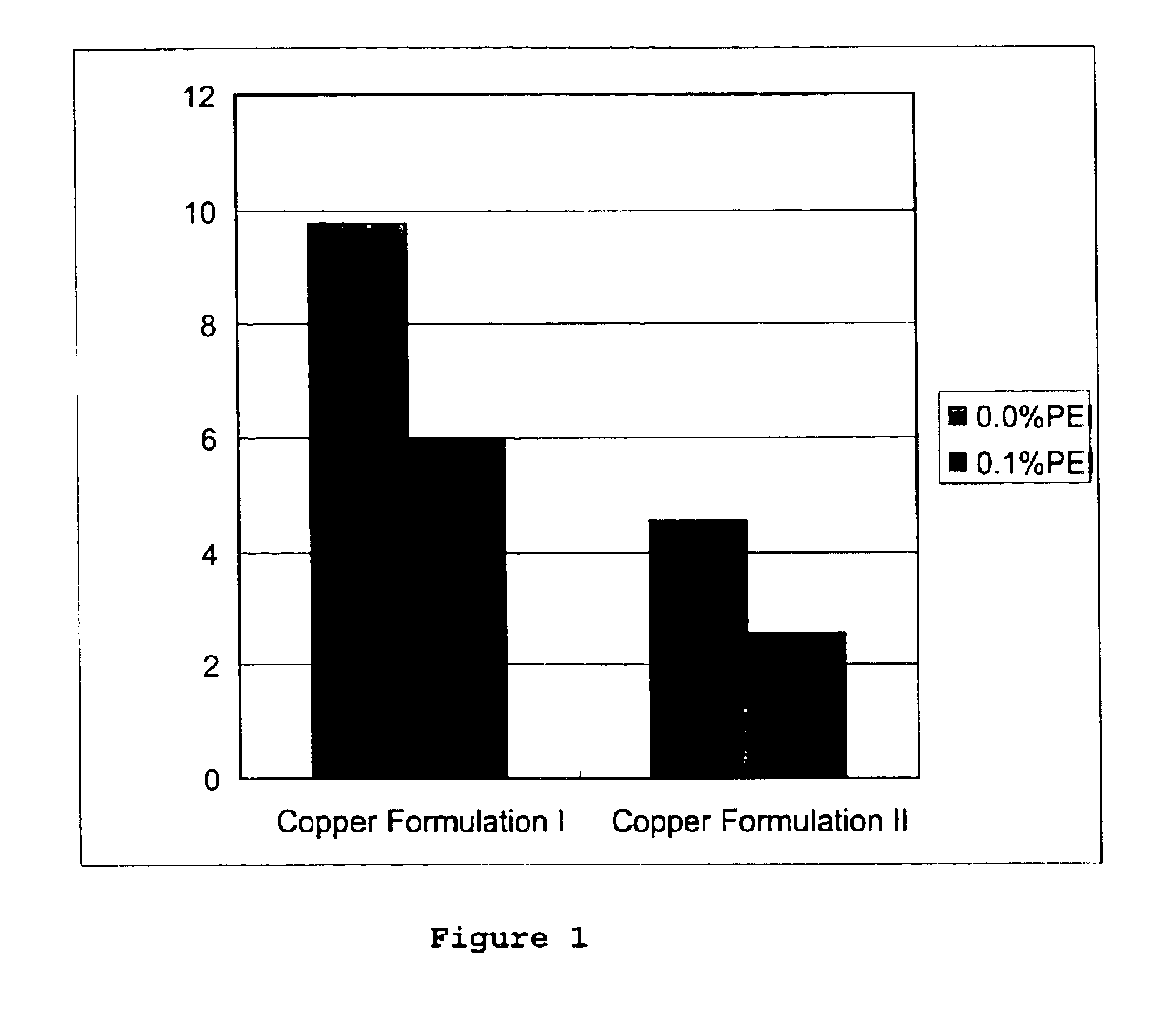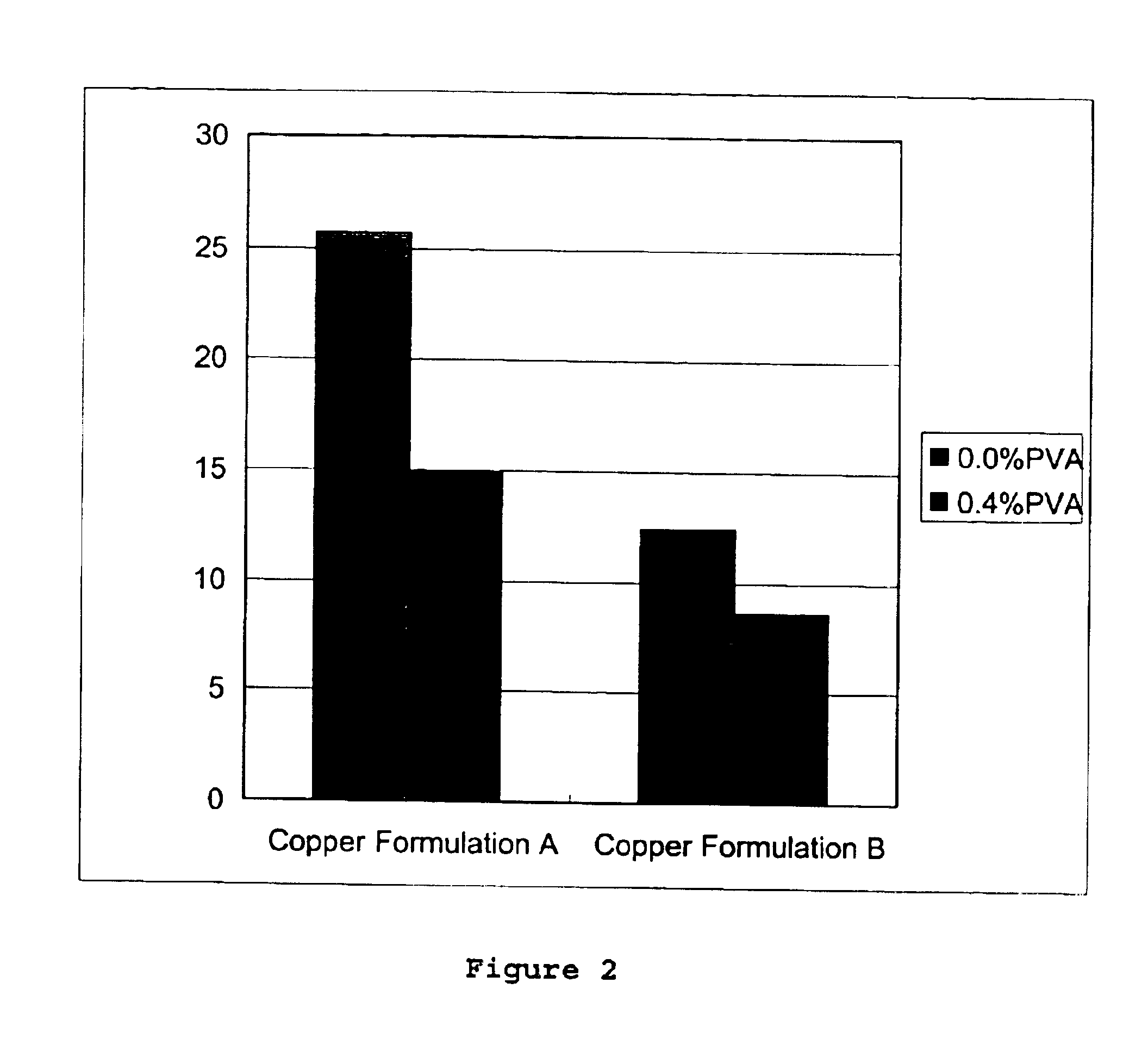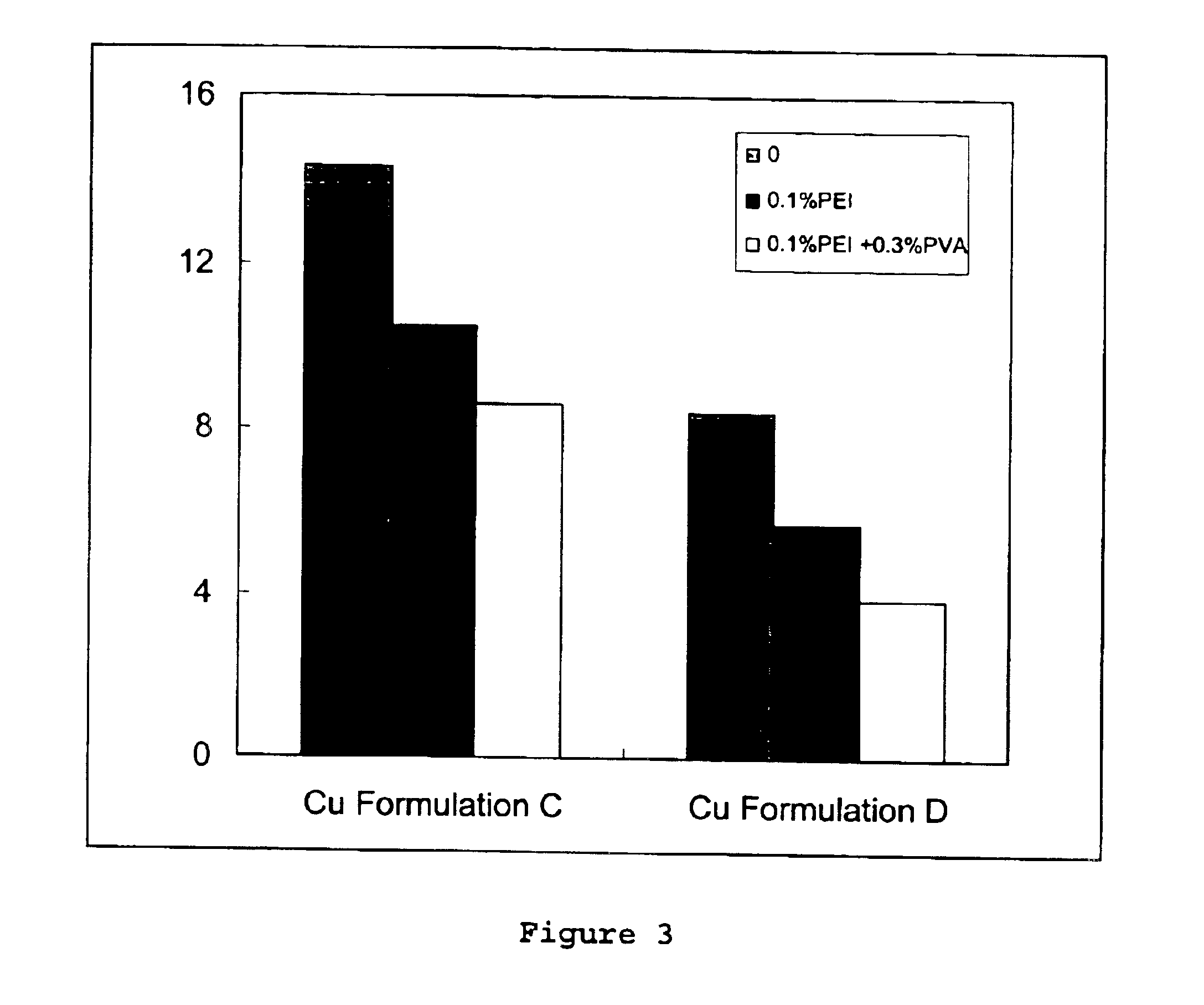Polymeric wood preservative compositions
a technology of polymer wood and composition, which is applied in the direction of biocides, paints, other chemical processes, etc., can solve the problems of high loss of copper from leaching, affecting the appearance of treated wood, and affecting the solubility of ammonia as copper solubilizing agent,
- Summary
- Abstract
- Description
- Claims
- Application Information
AI Technical Summary
Problems solved by technology
Method used
Image
Examples
examples 1-4
IngredientPercentExample 1PEI Mw. = 10,0000.08Monoethanolamine0.49Ammonia0.07Basic copper carbonate0.45Polyacrylamide Mw. = 1,5000.25Water98.66Appearance - ClearExample 2PEI Mw. = 10,0000.08Monoethanolamine0.49Ammonia0.07Basic copper carbonate0.45Polyacrylamide Mw. = 1,5000.50Water98.41Appearance - ClearExample 3PEI Mw. = 10,0000.16Monoethanolamine0.98Ammonia0.14Basic copper carbonate0.91Polyacrylamide Mw. = 1,5000.25Water97.56Appearance - ClearExample 4PEI Mw. = 10,0000.16Monoethanolamine0.98Ammonia0.14Basic copper carbonate0.91Polyacrylamide Mw. = 1,5000.50Water97.31Appearance - Clear
Examples of poly(Vinyl Pyrrolidone) Workable Solutions
examples 5-8
IngredientPercentExample 5PEI Mw. = 10,0000.08Monoethanolamine0.49Ammonia0.07Basic copper carbonate0.45Poly(vinyl pyrrolidone) Mw. = 55,0000.25Water98.66Appearance - ClearExample 6PEI Mw. = 10,0000.08Monoethanolamine0.49Ammonia0.07Basic copper carbonate0.45Poly(vinyl pyrrolidone) Mw. = 55,0000.50Water98.41Appearance - ClearExample 7PEI Mw. = 10,0000.16Monoethanolamine0.98Ammonia0.14Basic copper carbonate0.91Poly(vinyl pyrrolidone) Mw. = 55,0000.25Water97.56Appearance - ClearExample 8PEI Mw. = 10,0000.16Monoethanolamine0.98Ammonia0.14Basic copper carbonate0.91Poly(vinyl pyrrolidone) Mw. = 55,0000.50Water97.31Appearance - Clear
Examples of Poly(Vinyl Alcohol) Workable Solutions
examples 9-16
IngredientPercentExample 9Monoethanolamine1.71Basic copper carbonate1.01PVA, Mw. = 15,0000.20Water97.08Appearance - ClearExample 10Monoethanolamine1.40N-methylethanolamine0.51Basic copper carbonate0.09PVA, Mw. = 15,0000.40Water97.60Appearance - ClearExample 11PEI, Mw. = 50000.69Monoethanolamine1.32Basic copper carbonate1.01PVA, Mw. = 20,0000.40Water96.58Appearance - ClearExample 12PEI Mw. = 10,0000.69Monoethanolamine1.32Basic copper carbonate1.01PVA, Mw. = 15,0000.40Water96.58Appearance - ClearExample 13PEI Mw. = 70,0000.40Monoethanolamine1.21Ammonia0.03Basic copper carbonate0.09PVA, Mw. = 15,0000.40Water97.87Appearance - ClearExample 14PEI Mw. = 5,0000.17Monoethanolamine0.47Ammonia0.03Basic copper carbonate0.45PVA, Mw. = 15,0000.40Water98.48Appearance - ClearExample 15PEI Mw. = 10,0000.38Monoethanolamine1.05Ammonia0.07Basic copper carbonate1.01PVA, Mw. = 15,0000.40Water97.09Appearance - ClearExample 16PEI Mw. = 70,0000.19Monoethanolamine0.53Ammonia0.04Basic copper carbonate0.50PVA,...
PUM
| Property | Measurement | Unit |
|---|---|---|
| Fraction | aaaaa | aaaaa |
| Fraction | aaaaa | aaaaa |
| Fraction | aaaaa | aaaaa |
Abstract
Description
Claims
Application Information
 Login to View More
Login to View More - R&D
- Intellectual Property
- Life Sciences
- Materials
- Tech Scout
- Unparalleled Data Quality
- Higher Quality Content
- 60% Fewer Hallucinations
Browse by: Latest US Patents, China's latest patents, Technical Efficacy Thesaurus, Application Domain, Technology Topic, Popular Technical Reports.
© 2025 PatSnap. All rights reserved.Legal|Privacy policy|Modern Slavery Act Transparency Statement|Sitemap|About US| Contact US: help@patsnap.com



